We are Strong Towns Calgary, and we believe in a bottom-up approach to urbanism, promoting human dignity in our communities through achievable, citizen-led action.We serve as a pluralistic platform for civic communication, empowering advocacy and innovation toward stronger communities, challenging our city's problems and structures behind them.We imagine Calgary as a compassionate, vibrant, interconnected urban landscape where every community flourishes—grounded in sustainable practices, fiscal responsibility, and a spirit of inclusive stewardship.
Our Campaigns
Candidate Briefing
October 2025
We analyzed Calgary's municipal finances, breaking them down for candidates in the 2025 Municipal Election.Read our open letter here!
Strongest Town 2025
March 2025
Calgary was nominated in the 2025 Strongest Town Contest! Ultimately placing in the Top 8.Click to read more about our positivity-spreading campaign!
Park(ing) Day
Sep 2024 & 2025 - "Open House"
We designed and constructed a small house as an installation for ActivateYYC's Park(ing) Day weekends.Encouraging conversations about Calgary's parking and housing policy, and repurposing space in our city for more People-oriented Places.
Rezoning for Housing
Jan-April 2024 - Education & Advocacy
We supported the City of Calgary's decision to enable incremental housing growth citywide.Producing educational content for social media, and encouraging our members to advocate at the Public Hearing.
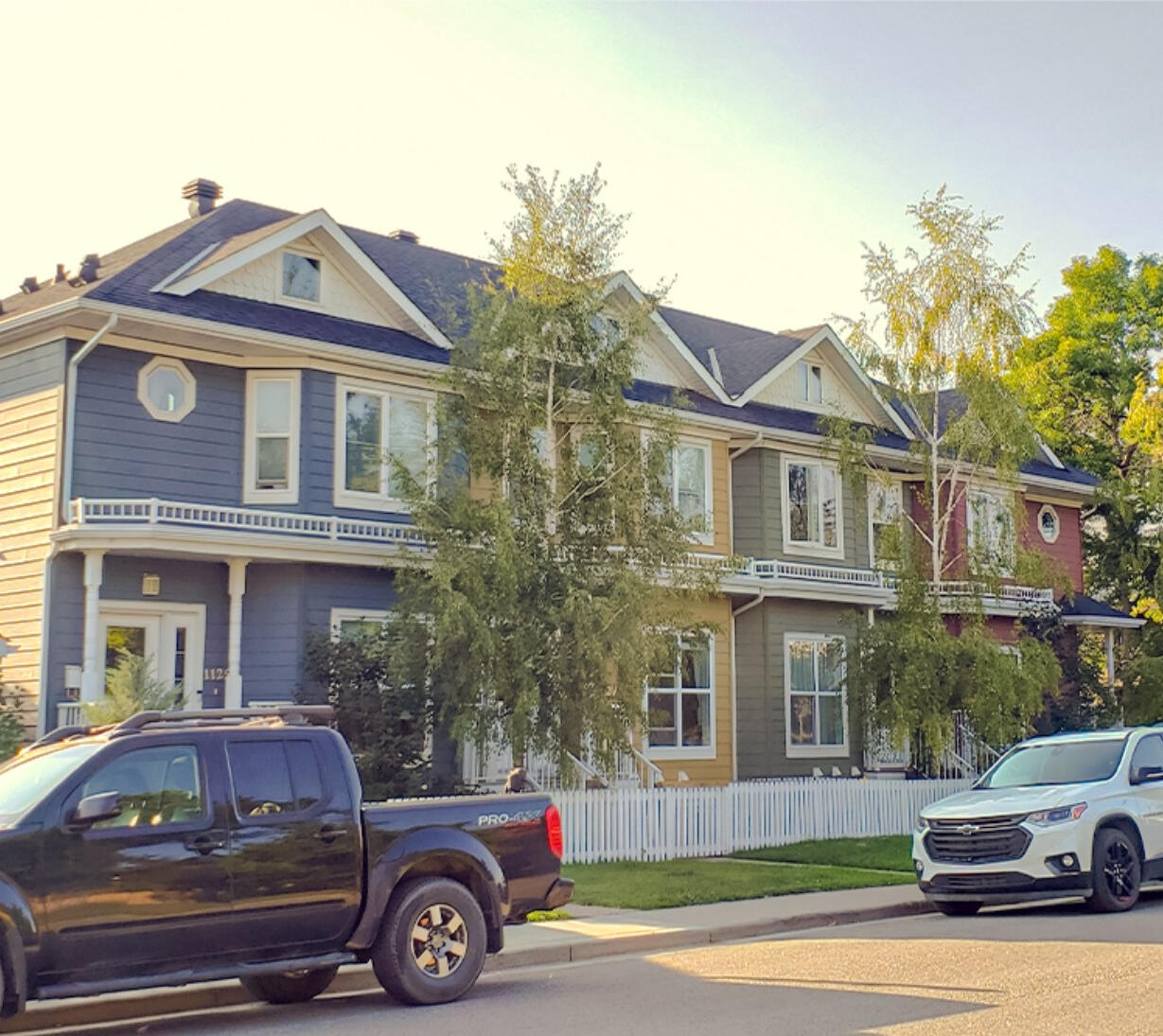
Got an idea?
Let's collaborate to make it happen!
We're always looking for opportunities to bring Calgarians together for positive, actionable change.🡒 Let us know how we can help!
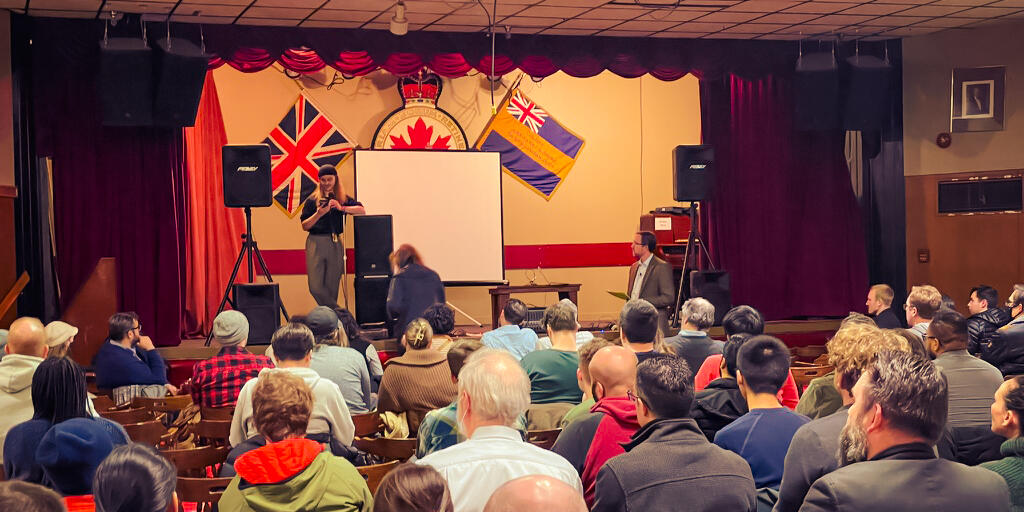
About Us
Strong Towns Calgary began in February 2023 when our co-founders wanted to bring a Strong Towns Local Conversation to their hometown.Since then we've advocated as a group in critical local issues on land-use, transportation, and fiscal resilience. Maintaining a presence on social media, as well as forums for productive conversation online, and in-person at our regular gatherings!
Our Values
Vote Calgary!
Calgary nominated for Strongest Town 2025
Strong Towns selected Calgary to compete among 16 municipalities across North America to determine which has made the most substantial improvements in fiscal resilience and urban vibrancy.
The public vote for the Strongest Town Contest website is now closed. Over the next six weeks, the public will determine a victor in a bracket-style tournament.Calgary had the incredible opportunity to compete against Alburquerque, New Mexico, and Harrisonburg, Virginia.This was an amazing chance to showcase Calgary’s optimistic story, celebrating our successes and empowering more Calgarians to address our shortcomings through action.Calgary has made significant progress in moving away from the unsustainable suburban expansion model that has characterized much of our past. We are now focusing inward, on policy and implementation, to help established communities thrive.Calgary was the only Canadian city competing in 2025. While we were not victorious, Calgary was the only Canadian city to compete in the Strongest Town since the annual contest began in 2016.
2025 Election
Strong Towns Calgary volunteers pooled resources this summer to write the following letter, sent to every official candidate for Mayor and Councillor in the 2025 Municipal Election.As well, for those who emerge victorious, we have purchased 15 copies of You'll Pay for This — a short book on municipal finances by Canadian author Michel Durand-Wood — to help our next municipal government prepare for their first budget!
Open letter to the Candidates
Dear Candidate,Calgary is facing a growing infrastructure challenge that will shape our city’s taxes, services, and long-term resilience. As a new Council member, one of your first major decisions after the October election will be the mid-cycle budget adjustments. Strong Towns Calgary has gathered data that can help you understand the trends — and the choices — ahead.
About Strong Towns Calgary
Strong Towns Calgary is a local group working to put Strong Towns ideas into action in our city. Strong Towns is a nonprofit organization that analyzes the failures of the post-war North American development pattern and equips residents with the tools to make their communities stronger and more financially resilient.We aim to be a resource for Calgarians and Council, offering clear, local data and practical ideas.
What the Data Shows
We applied Calgary’s Annual Financial Report data to the Strong Towns Finance Decoder, a tool based on the Canadian Public Sector Accounting Board’s SORP-4: Indicators of Financial Condition.Five key insights stand out:1. City finances are stable — for now
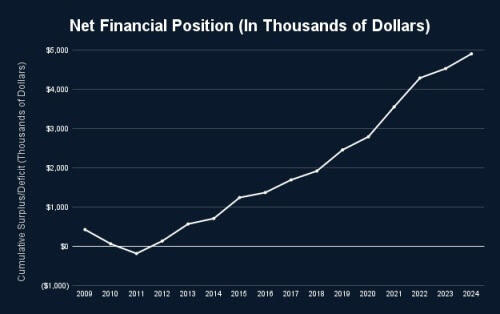
Since 2011, Calgary’s financial assets have outpaced its liabilities — a positive trajectory that shows strong short-term stability. The City currently maintains an AA+ credit rating, but the 2025 Risk Profile notes potential fiscal pressures from increasing capital spending, debt limits between 40–50% of the maximum, and new provincial requisitions adding about $218/year for the average home.So what? Stability can erode quickly if capital spending outpaces revenue growth.2. Infrastructure is quietly eroding.
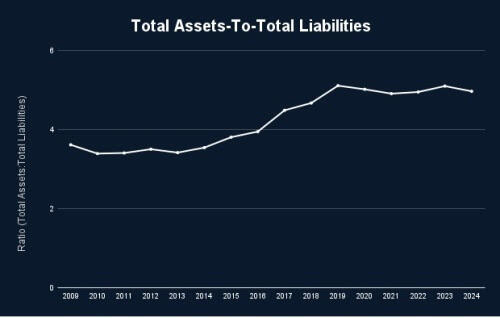
The Total Assets-to-Liabilities ratio, a measure of financial resilience, has begun to decline, suggesting liabilities are growing faster than assets. The City now rates Capital Infrastructure Risk as High and Increasing.So what? Erosion of this ratio signals a long-term structural risk, even with a strong credit rating today.3. Maintenance is falling behind
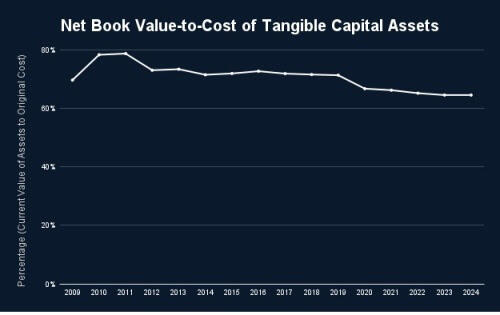
$1.25B in new assets since 2020 hasn’t reversed the downward trend in asset condition. The share of assets in Good/Very Good condition fell from 79% in 2020 to 73% in 2025, while Fair increased from 11% to 16%, and Poor/Very Poor rose from 7% to 11%.So what? More assets are slipping into higher-cost maintenance categories every year.4. Asset conditions are trending downward

The City’s infrastructure portfolio is valued at $126.5B. Growth in both population and infrastructure is increasing the annual maintenance burden, while most City assets remain in 'Good' condition, the percentage has fallen over time, and 'Poor' condition assets have increased.So what? Without reinvestment, the cost to restore these assets will rise exponentially.5. Infrastructure growth per person drives higher costs
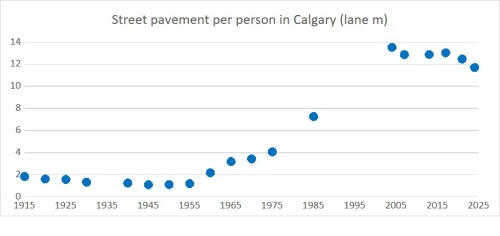
Over the past 60 years, Calgary has built more infrastructure per person than ever before. Street pavement alone increased from 2 m/person in 1960 to ~13 m/person in 2021. The Risk Profile now lists Accommodating Growth Risk as High and Increasing, with population growth of 6.2% in 2024 and a forecasted 3.5% in 2025.So what? More infrastructure per person means higher long-term maintenance costs — eventually requiring either higher taxes or reduced services.
Calgary's Infrastructure Reality
The City’s own reports show similar patterns:
Current Replacement Value (cost to replace all City assets): up from $84.7B in 2017 (Infrastructure Status Report 2017) to $126.5B in 2025 (Corporate Risk Report, July 2025).
Infrastructure Funding Gap (unfunded needs over the next 10 years): $5.97B in 2017 → $7.2B in 2022 (Corporate Asset Management Plan 2022). No newer figure has been published.
The 2022 Corporate Asset Management Plan stated: “The overall health of City assets is good… however… the general condition of the assets is trending downward.”
Based on the 2017 Infrastructure Status Report, a conservative inflation-adjusted estimate suggests the City would need to invest at least $3.8–$3.9B/year to replace assets at the end of their life. The actual requirement today is likely higher, but no updated City-wide estimate has been published since.For comparison, total City expenses in 2024 were just under $5B (Annual Financial Report 2024).
After the Election
A new Infrastructure Status Report and Corporate Asset Management Plan are expected soon after the election. These will give Council an updated look at whether Calgary can sustain these trends and how best to respond.We’d like to see every candidate address how Calgary will maintain the city we already have before building more. If you’d like to discuss the data or explore solutions, Strong Towns Calgary would be glad to connect before or after the election.Sincerely,Zach Manntai, Founder
Strong Towns Calgary
Contact Us
Let's Start a Conversation!
Feel free to reach out to us on our official social media accounts for general inquiries.If you have any immediate questions or would like to reach out to us directly, please fill out the contact box!


